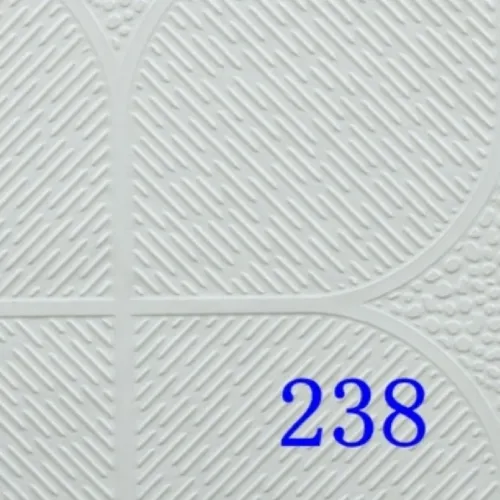Oct . 12, 2024 08:20 Back to list
Comparison of Mineral Fibre Ceiling Boards and Gypsum Ceiling Boards for Optimal Performance
Mineral Fibre Board Ceiling vs. Gypsum Board A Comprehensive Comparison
In the realm of interior construction and design, selecting the right materials is crucial for achieving both functionality and aesthetic appeal. Among the various options available, mineral fibre board ceilings and gypsum boards stand out as prominent choices. This article delves into the characteristics, advantages, and disadvantages of these two materials, helping you make an informed decision for your next project.
What Are Mineral Fibre Boards?
Mineral fibre boards, also known as acoustic ceiling tiles, are composite materials made from natural or synthetic fibers, primarily mineral wool, which are combined with binding agents. These boards are designed to provide effective sound insulation and are often used in commercial spaces, schools, and hospitals. They are known for their lightweight properties, ease of installation, and ability to improve indoor acoustics.
Advantages of Mineral Fibre Boards
1. Sound Absorption One of the primary benefits of mineral fibre boards is their excellent sound absorption capabilities. They can significantly reduce noise levels in a room, making them ideal for environments where sound control is essential.
2. Thermal Insulation These boards also offer thermal insulation, helping to maintain a comfortable indoor temperature and potentially leading to energy savings.
3. Fire Resistance Mineral fibre boards are inherently fire-resistant due to their composition, making them safer options for buildings where fire safety regulations are stringent.
4. Moisture Resistance Many mineral fibre boards come with moisture-resistant properties, preventing mold growth and deterioration in humid environments, such as kitchens and bathrooms.
Disadvantages of Mineral Fibre Boards
Despite their numerous advantages, mineral fibre boards have certain drawbacks. They are less durable compared to gypsum boards and can be prone to damage from impact. In addition, while they are effective for sound absorption, their aesthetic appeal may not suit all design preferences, as they can sometimes appear institutional.
mineral fibre board ceiling vs gypsum board

What Is Gypsum Board?
Gypsum board, commonly known as drywall or plasterboard, consists of a gypsum core sandwiched between two sheets of heavy paper. This material is widely used for constructing walls, ceilings, and partitions in residential and commercial buildings.
Advantages of Gypsum Boards
1. Durability Gypsum boards are highly durable and resilient, making them susceptible to fewer punctures and dents compared to mineral fibre boards. This durability makes them suitable for high-traffic areas.
2. Smooth Finish Once painted or finished, gypsum boards provide a seamless and smooth surface, allowing for a clean aesthetic ideal for various design applications.
3. Fire Resistance Like mineral fibre boards, gypsum boards are also inherently fire-resistant, providing an additional layer of safety for buildings.
4. Wide Availability Gypsum boards are readily available in different thicknesses and types, allowing for flexibility in construction and design.
Disadvantages of Gypsum Boards
However, gypsum boards have their limitations. They are not as effective at sound insulation compared to mineral fibre boards, making them less ideal for environments where noise control is a priority. Furthermore, gypsum boards can be vulnerable to water damage, leading to mold growth if not properly treated.
Conclusion
Choosing between mineral fibre board ceilings and gypsum boards ultimately depends on the specific needs of your project. If sound absorption and moisture resistance are top priorities, mineral fibre boards may be the better option. Conversely, if durability and aesthetics are more critical, gypsum boards could be the ideal choice. Evaluate your space's requirements, consider the long-term benefits, and make an informed decision that aligns with your design vision and functionality needs. By understanding the strengths and weaknesses of each material, you can create a space that meets your expectations for beauty, safety, and performance.
-
Durable Ceiling T Grid Systems | Easy InstallationNewsAug.29,2025
-
PVC Gypsum Ceiling: Durable, Laminated Tiles for Modern SpacesNewsAug.28,2025
-
Pvc Gypsum Ceiling Is DurableNewsAug.21,2025
-
Mineral Fiber Board Is DurableNewsAug.21,2025
-
Ceiling Tile Clip Reusable DesignNewsAug.21,2025
-
Ceiling T Grid Modular DesignNewsAug.21,2025







